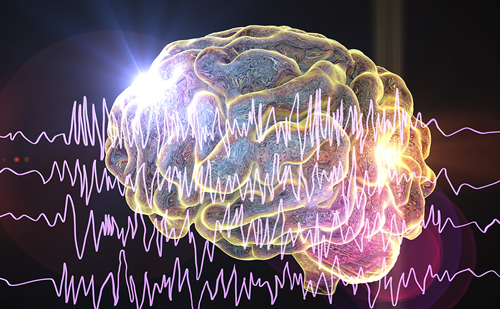Search Results
Showing Results for epileptogenesis

Affecting over 70 million patients worldwide, epilepsy is a chronic neurological disorder characterized by intermittent bursts of hyper-synchronous neuronal discharges.1 The manifestations are variable but reflective of the unique milieu and biology of epileptogenic foci.2 Pharmacological treatment with antiepileptic drugs (AEDs) ...

William Gower’s statement that seizures beget seizures1 is often quoted as a first recognition of seizure-dependent progressive character of epilepsies. It is worth saying that this assumption has by no means a general value as it does not apply ...

Welcome to the winter edition of European Neurological Review, which features a diverse range of articles covering a number of therapeutic areas. This edition begins with a special report entitled ‘A Year of the Brain’. This article focuses on the ...

William Gower’s statement that seizures beget seizures1 is often quoted as a first recognition of seizure-dependent progressive character of epilepsies. It is worth saying that this assumption has by no means a general value as it does not apply ...

Johan A Aarli President, World Federation of Neurology (WFN) Johan A Aarli President, World Federation of Neurology (WFN) Johan A Aarli is President of the World Federation of Neurology (WFN), where he is also Chairman of the Public Relations & WHO ...

The inability to adequately treat all patients with refractory epilepsy provides a continuous impetus to investigate novel forms of treatment. Neurostimulation is an emerging treatment for neurological diseases. Electrical pulses are administered directly to, or in the surrounding area of, ...

Epilepsy is a common neurological disorder, affecting 1–2% of the population worldwide, and is characterised by recurrent spontaneous seizures. Seizures are brief behavioural changes caused by the abnormally synchronous and rhythmic firing of neuronal assemblies in the brain, which may either ...

Seizures are the symptoms of a dysfunctional brain. They manifest in myriad different epilepsy syndromes with an equally wide variety of pathophysiologies. In the developed world, the majority of patients with newly diagnosed epilepsy will be started on a prophylactic ...

It has long been recognized that seizures will be or will become refractory to pharmacotherapy in more than 30% of patients, and that localized related epilepsies are less likely to be controlled than the idiopathic generalized syndromes. Some of these patients ...
Latest articles videos and clinical updates - straight to your inbox
Log into your Touch Account
Earn and track your CME credits on the go, save articles for later, and follow the latest congress coverage.
Register now for FREE Access
Register for free to hear about the latest expert-led education, peer-reviewed articles, conference highlights, and innovative CME activities.
Sign up with an Email
Or use a Social Account.
This Functionality is for
Members Only
Explore the latest in medical education and stay current in your field. Create a free account to track your learning.

